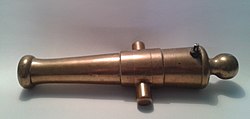Barrels


In barrels, this centralises mass to the operator, not only to reduce perceived weight due to center of mass, but also to improve accuracy/acquisition and stabilise the balance handling of the weapon. In addition, a tapered barrel means that chamber pressures are higher, leading to increased round velocity.
